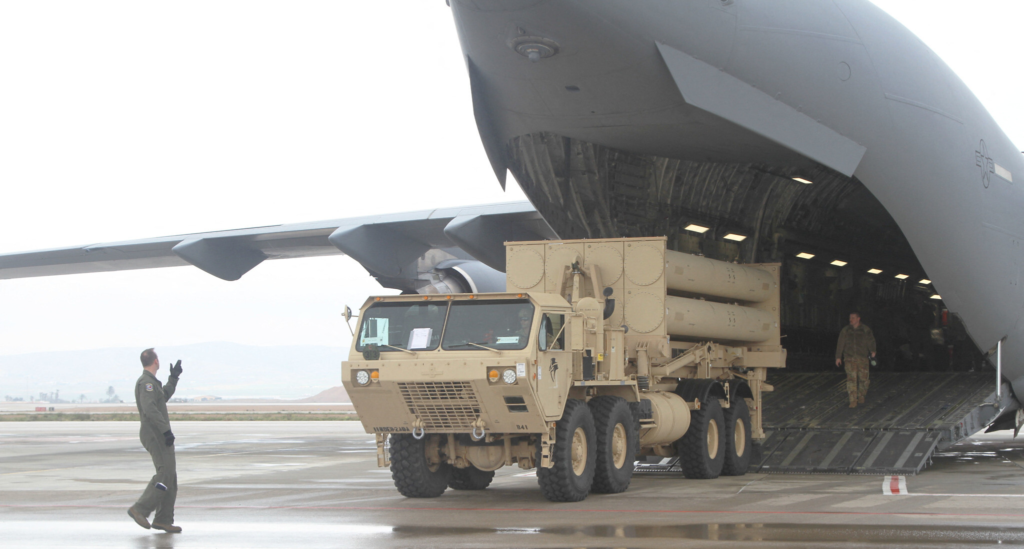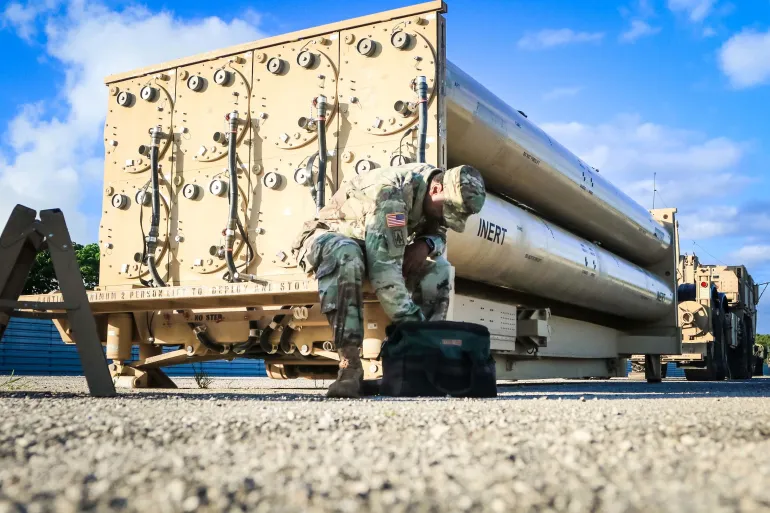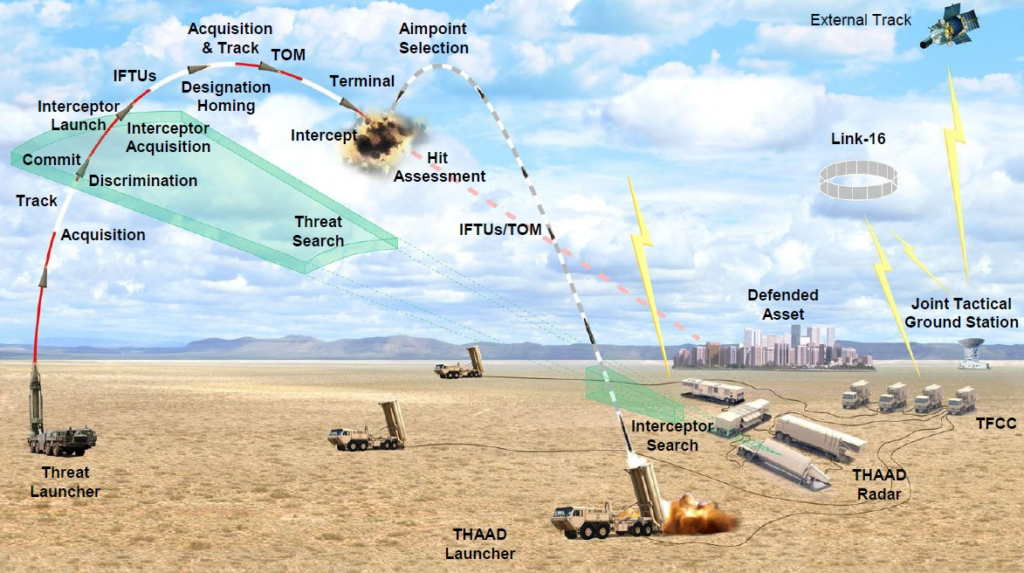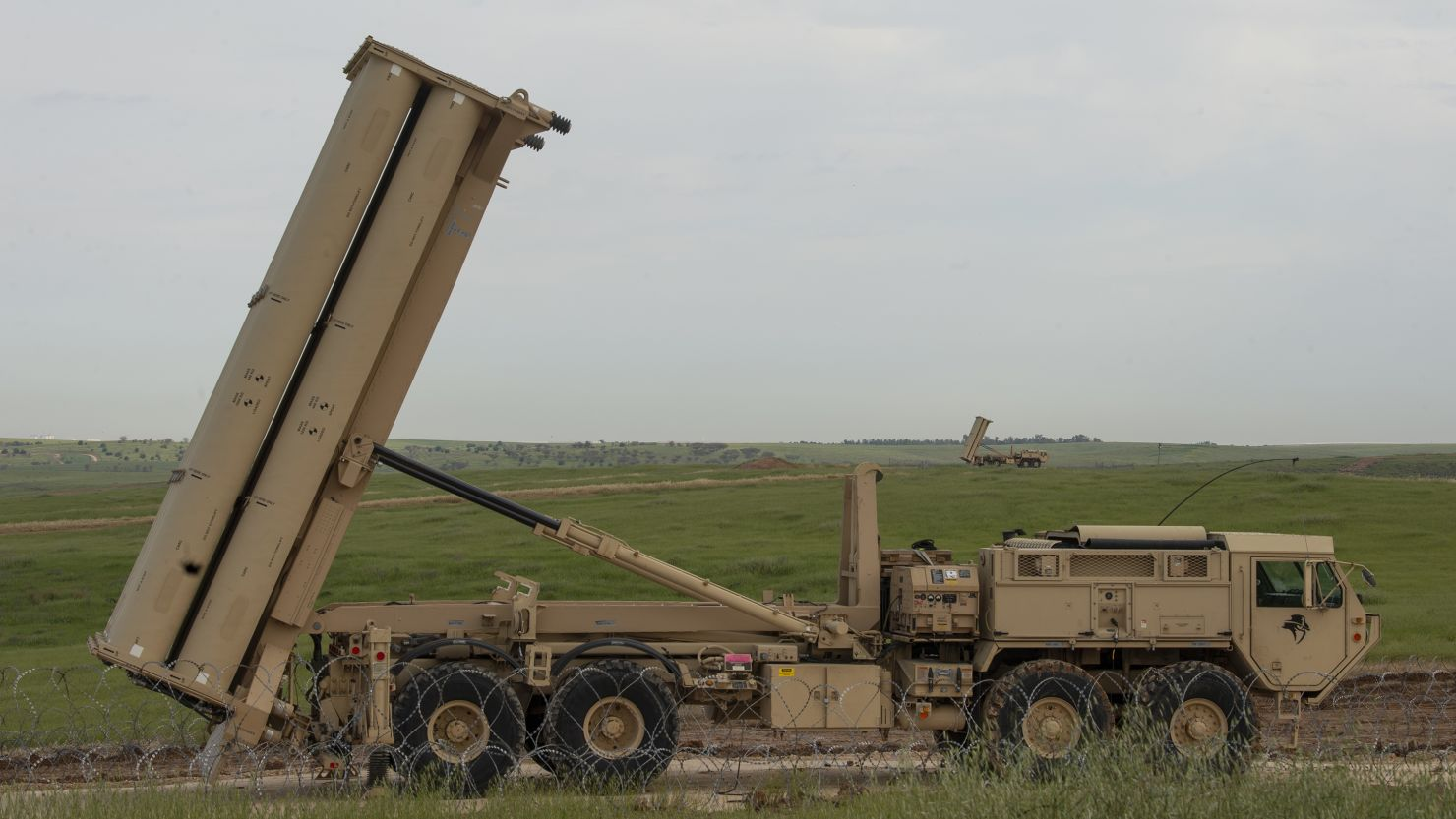In the wake of escalating tensions between Israel and Iran, the United States has taken a significant step to reinforce Israel’s air defense capabilities. Following an Iranian missile barrage on October 1, 2024, the US government announced the deployment of the Terminal High-Altitude Area Defense (THAAD) system to Israel.
This deployment reflects the strong alliance between the US and Israel and is aimed at protecting Israel from further missile threats. The THAAD system, known for its precision and effectiveness, is a critical addition to Israel’s already robust missile defense systems.
This move comes amidst rising regional tensions, involving not just Israel and Iran, but also Hezbollah and Hamas, further complicating the geopolitical landscape of the Middle East.
THAAD: A Strategic Asset in Defending Israel
The Terminal High-Altitude Area Defense (THAAD) system is a crucial part of the US military’s anti-missile defense strategy. Designed to intercept and destroy short, medium, and intermediate-range ballistic missiles, THAAD is known for its precision and high-altitude capabilities, making it particularly effective against ballistic missile threats.
Read : Israeli Strike Silenced a Beating Heart of Lebanon as it Ruins Nabatiyeh Market
The US Department of Defense’s decision to deploy this system to Israel is seen as a direct response to the growing threat from Iranian ballistic missiles.
Read : Israeli Foreign Minister Threatens Iran, Saying It ‘Deserves to Be Destroyed’
The Iranian missile attack on Israel earlier this month saw nearly 200 ballistic missiles launched towards central and southern parts of the country. While most of these missiles were intercepted by Israel’s Iron Dome and other missile defense systems, the attack underscored the evolving nature of missile warfare in the region and the need for additional defensive measures.
Israel has historically relied on its Iron Dome system, which is highly effective at intercepting short-range missiles. However, the THAAD system offers a complementary layer of defense, specifically targeting higher-altitude missile threats that could evade other systems.

The US government’s statement emphasized that this deployment “underscores the United States’ ironclad commitment to the defense of Israel.” By sending THAAD and its accompanying crew, the US is not only helping to defend Israel’s civilian population but also American citizens currently in the country.
This is a clear message to Iran and other adversaries that any further aggression against Israel will be met with a coordinated and robust defense.
The Iran-Israel Conflict: A History of Escalation
The October 1 missile attack from Iran was the latest in a series of hostile exchanges between the two countries. Tensions between Israel and Iran have been building for years, exacerbated by Iran’s support for Hezbollah and other proxy groups, as well as Israel’s aggressive stance against Iranian military assets in the region.
In this latest escalation, Iran claimed that its missile barrage was in response to a series of targeted assassinations carried out by Israel, including the killings of Hezbollah leader Hassan Nasrallah, a senior Iranian Revolutionary Guard Corps (IRGC) officer in Beirut, and Hamas leader Ismail Haniyeh in Tehran.
Israel’s airstrike campaign has intensified significantly over the past few weeks, with Israeli forces targeting Hezbollah positions in Lebanon and even striking parts of Beirut. These strikes are seen as part of Israel’s broader effort to weaken Iran-backed militias and reduce the influence of groups like Hezbollah, which have long posed a threat to Israel’s northern border.
The current conflict between Israel and Hezbollah dates back to last October, when Hezbollah began firing rockets into Israel. This was initially framed as an act of solidarity with Palestinians in Gaza, but has since escalated into a sustained campaign of rocket fire and retaliatory Israeli airstrikes.

The situation has remained tense, with daily cross-border exchanges of fire and both sides preparing for a possible wider conflict. However, diplomatic efforts to broker a ceasefire in Gaza have repeatedly failed, leading to further violence and instability.
Iran’s missile attack on Israel marks a dangerous escalation in this already volatile situation. By targeting Israel directly, Iran has sent a clear signal that it is willing to engage in direct military confrontation with its adversary.
Israel, for its part, has vowed to respond “precisely and deadly” to the missile barrage, with Defense Minister Yoav Gallant warning that the Israeli military’s response would be “above all surprising.”
This tit-for-tat escalation raises concerns that the conflict could spiral into a full-scale war involving not only Israel and Iran but also Hezbollah, Hamas, and potentially other regional actors.
Regional Implications After US Sends Anti-Missile System to Israel
The deployment of the THAAD system to Israel is not just a defensive measure; it also has significant geopolitical implications for the wider Middle East. By sending such a sophisticated system to Israel, the US is reaffirming its strategic partnership with Israel and its commitment to ensuring the country’s security.
This move is also a clear message to Iran and its allies that the US will not tolerate further aggression and is prepared to take military action if necessary.
The deployment of THAAD to Israel is not the first time the US has provided such support to its Middle Eastern ally. In 2019, a THAAD battery was sent to Israel for a training exercise, and last year, following Hamas’ attack on southern Israel, the US briefly stationed a THAAD system in the region as a precautionary measure.
This latest deployment, however, comes amid heightened tensions and is likely to stay in place for a more extended period given the ongoing conflict.
For Iran, the US deployment of THAAD is likely to be seen as further evidence of American interference in the region and a direct challenge to its missile capabilities. Iran has invested heavily in developing its ballistic missile program, which it sees as a crucial deterrent against both Israel and the US.
The success of the THAAD system in intercepting Iranian missiles could diminish the effectiveness of this deterrent, forcing Iran to rethink its strategy.

For other countries in the region, particularly Gulf states that have their own concerns about Iran’s military activities, the US deployment of THAAD to Israel is likely to be seen as a positive development. Many of these countries, including Saudi Arabia and the United Arab Emirates, have expressed interest in acquiring their own THAAD systems to bolster their air defenses.
The deployment to Israel could potentially accelerate these efforts, as regional states seek to enhance their defensive capabilities in the face of growing missile threats from Iran.
The broader international community, particularly countries with interests in the Middle East, will be watching the situation closely. While the US has emphasized that its deployment of THAAD is purely defensive, any further escalation of violence between Israel and Iran could have far-reaching consequences for global security and stability.
A full-scale conflict between the two countries could disrupt vital shipping lanes in the Persian Gulf, impact global energy markets, and draw in other regional and international powers.
In conclusion, the deployment of the THAAD system to Israel marks a significant moment in the ongoing conflict between Israel and Iran. As the US bolsters Israel’s air defenses, the prospect of further escalation looms large.
Both sides have indicated that they are prepared for further military action, raising concerns that the region could be on the brink of a wider war. The outcome of this conflict will have significant implications not only for Israel and Iran but also for the broader Middle East and the international community.

